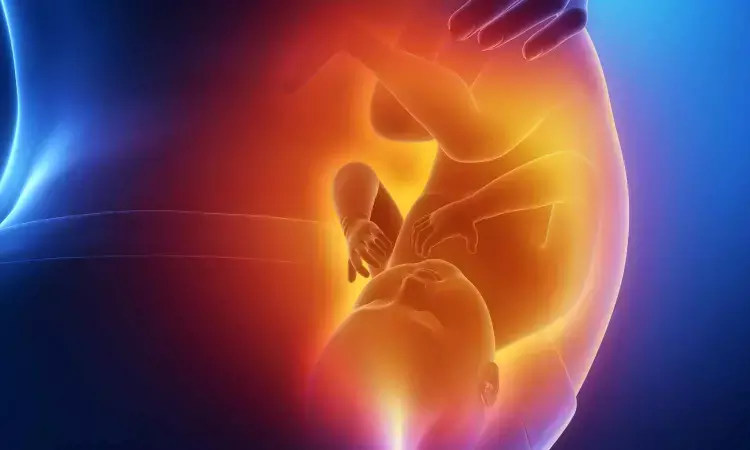- Home
- Medical news & Guidelines
- Anesthesiology
- Cardiology and CTVS
- Critical Care
- Dentistry
- Dermatology
- Diabetes and Endocrinology
- ENT
- Gastroenterology
- Medicine
- Nephrology
- Neurology
- Obstretics-Gynaecology
- Oncology
- Ophthalmology
- Orthopaedics
- Pediatrics-Neonatology
- Psychiatry
- Pulmonology
- Radiology
- Surgery
- Urology
- Laboratory Medicine
- Diet
- Nursing
- Paramedical
- Physiotherapy
- Health news
- Fact Check
- Bone Health Fact Check
- Brain Health Fact Check
- Cancer Related Fact Check
- Child Care Fact Check
- Dental and oral health fact check
- Diabetes and metabolic health fact check
- Diet and Nutrition Fact Check
- Eye and ENT Care Fact Check
- Fitness fact check
- Gut health fact check
- Heart health fact check
- Kidney health fact check
- Medical education fact check
- Men's health fact check
- Respiratory fact check
- Skin and hair care fact check
- Vaccine and Immunization fact check
- Women's health fact check
- AYUSH
- State News
- Andaman and Nicobar Islands
- Andhra Pradesh
- Arunachal Pradesh
- Assam
- Bihar
- Chandigarh
- Chattisgarh
- Dadra and Nagar Haveli
- Daman and Diu
- Delhi
- Goa
- Gujarat
- Haryana
- Himachal Pradesh
- Jammu & Kashmir
- Jharkhand
- Karnataka
- Kerala
- Ladakh
- Lakshadweep
- Madhya Pradesh
- Maharashtra
- Manipur
- Meghalaya
- Mizoram
- Nagaland
- Odisha
- Puducherry
- Punjab
- Rajasthan
- Sikkim
- Tamil Nadu
- Telangana
- Tripura
- Uttar Pradesh
- Uttrakhand
- West Bengal
- Medical Education
- Industry
Study indicates Bidirectional Relationship Between Cesarean Delivery and Fecundability

In a groundbreaking effort to demystify the intricate relationship between cesarean delivery and fecundability, a recent prospective cohort study has achieved significant strides in unraveling the complexities surrounding these reproductive outcomes. The findings suggest a bidirectional relationship between cesarean delivery and fecundability, hinting at a common underlying explanatory mechanism.
The study results were published in the American Journal of Obstetrics & Gynecology.
Previous research has hinted at the impact of cesarean delivery on subsequent pregnancies, with a particular focus on reduced fecundability. However, the specific nature of this bidirectional relationship has remained elusive. This study, drawing upon comprehensive data from the Norwegian Mother, Father, and Child Cohort study intricately linked with the Medical Birth Registry of Norway, aimed to provide clarity on the nuanced connection between cesarean delivery and reduced fecundability.
Encompassing a cohort of 42,379 women, the study meticulously assessed the fecundability ratio (the per-cycle probability of pregnancy) and the relative risk of infertility (defined as time to pregnancy ≥12 months) based on the mode of delivery in the previous childbirth. Additionally, the study delved into the reverse association, exploring the relative risk of having a cesarean delivery based on fecundability in a cohort of 74,024 women.
Key Achievements:
The study's achievements are notably significant.
Among women with more than one child, those with a previous cesarean delivery demonstrated a lower fecundability ratio and an increased risk of infertility compared to those who had a vaginal delivery.
The adjusted relative risk of infertility was found to be 1.21 among women with a previous cesarean delivery, marking a crucial advancement in understanding the repercussions of this mode of delivery on subsequent fertility.
Moreover, the study unearthed a reverse association, adding a new layer of understanding to the intricate relationship.
Women facing challenges in conceiving within 12 or more cycles were found to have a higher risk for cesarean delivery (adjusted relative risk of 1.57) compared to those who successfully conceived within the first two cycles.
These findings held across various sociodemographic and clinical risk factors, providing a comprehensive view of the bidirectional dynamics.
- This study's nuanced findings contribute to unraveling the bidirectional relationship between cesarean delivery and fecundability and hint at a common underlying explanatory mechanism. The implications extend beyond understanding the reproductive outcomes for women with a history of cesarean delivery; they offer valuable insights for clinicians and women navigating reproductive health decisions. As this research opens new avenues for exploration, it sets the stage for more targeted interventions and personalized guidance in the realm of reproductive health post-cesarean delivery.
Further reading: Sima YT, Magnus MC, Kvalvik LG, et al. The relationship between cesarean delivery and fecundability: a population-based cohort study. Am J Obstet Gynecol. Published online October 19, 2023. doi:10.1016/j.ajog.2023.10.029
BDS, MDS
Dr.Niharika Harsha B (BDS,MDS) completed her BDS from Govt Dental College, Hyderabad and MDS from Dr.NTR University of health sciences(Now Kaloji Rao University). She has 4 years of private dental practice and worked for 2 years as Consultant Oral Radiologist at a Dental Imaging Centre in Hyderabad. She worked as Research Assistant and scientific writer in the development of Oral Anti cancer screening device with her seniors. She has a deep intriguing wish in writing highly engaging, captivating and informative medical content for a wider audience. She can be contacted at editorial@medicaldialogues.in.
Dr Kamal Kant Kohli-MBBS, DTCD- a chest specialist with more than 30 years of practice and a flair for writing clinical articles, Dr Kamal Kant Kohli joined Medical Dialogues as a Chief Editor of Medical News. Besides writing articles, as an editor, he proofreads and verifies all the medical content published on Medical Dialogues including those coming from journals, studies,medical conferences,guidelines etc. Email: drkohli@medicaldialogues.in. Contact no. 011-43720751



